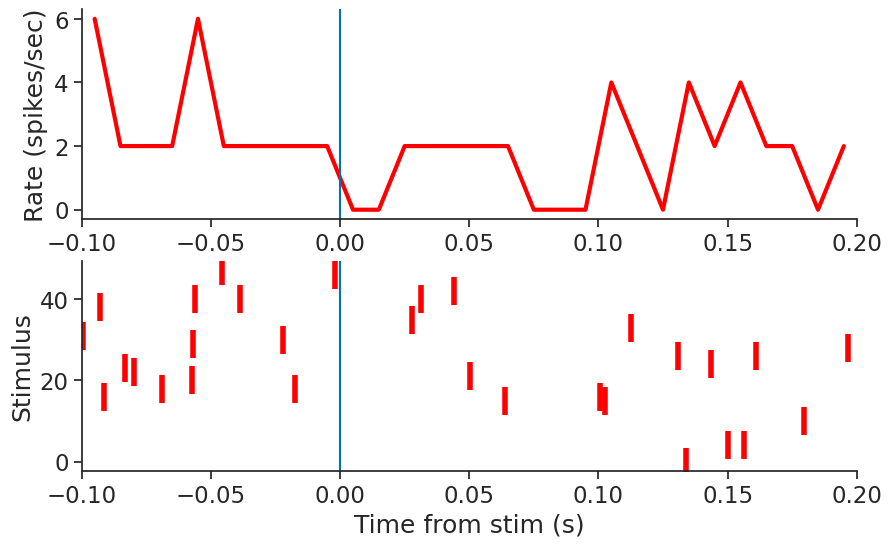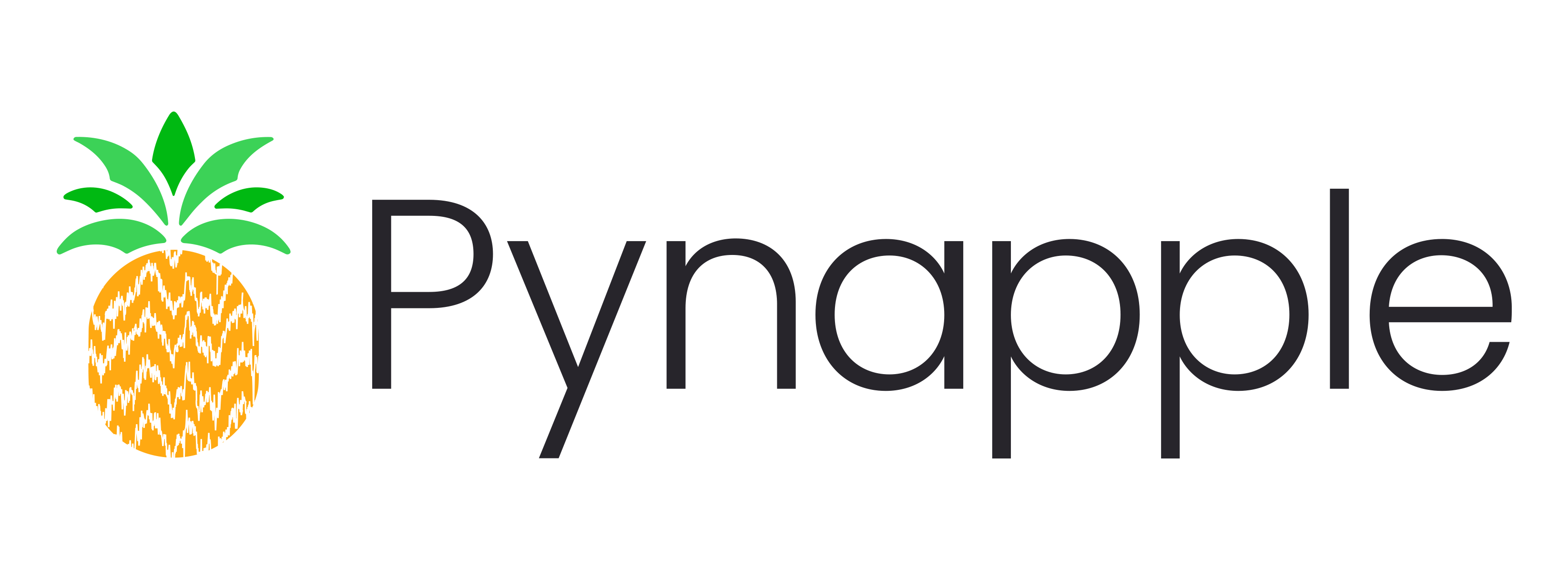Perievent#
The perievent module allows to re-center time series and timestamps data around a particular event as well as computing events (spikes) trigger average.
Peri-Event Time Histogram (PETH)#
stim = nap.Tsd(
t=np.sort(np.random.uniform(0, 1000, 50)),
d=np.random.rand(50), time_units="s"
)
ts1 = nap.Ts(t=np.sort(np.random.uniform(0, 1000, 2000)), time_units="s")
The function compute_perievent align timestamps to a particular set of timestamps.
peth = nap.compute_perievent(
timestamps=ts1,
tref=stim,
minmax=(-0.1, 0.2),
time_unit="s")
print(peth)
Index rate ref_times
------- ------- -----------
0 3.33333 9.98
1 nan 28.06
2 nan 37.86
3 nan 84.67
4 6.66667 84.95
5 nan 105.15
6 nan 137.35
... ... ...
43 nan 913.85
44 nan 924.17
45 nan 927.07
46 3.33333 927.48
47 3.33333 930.75
48 nan 938.21
49 nan 986.77
The returned object is a TsGroup. The column ref_times is a
metadata column that indicates the center timestamps.
Raster plot#
It is then easy to create a raster plot around the times of the
stimulation event by calling the to_tsd function of pynapple to “flatten” the TsGroup peth.
plt.figure(figsize=(10, 6))
plt.subplot(211)
plt.plot(np.mean(peth.count(0.01), 1) / 0.01, linewidth=3, color="red")
plt.xlim(-0.1, 0.2)
plt.ylabel("Rate (spikes/sec)")
plt.axvline(0.0)
plt.subplot(212)
plt.plot(peth.to_tsd(), "|", markersize=20, color="red", mew=4)
plt.xlabel("Time from stim (s)")
plt.ylabel("Stimulus")
plt.xlim(-0.1, 0.2)
plt.axvline(0.0)
<matplotlib.lines.Line2D at 0x7fc755340ce0>

The same function can be applied to a group of neurons.
In this case, it returns a dict of TsGroup.
Event trigger average#
The function compute_event_trigger_average compute the average feature around a particular event time.
eta = nap.compute_event_trigger_average(
group=tsgroup,
feature=stim,
binsize=0.1,
windowsize=(-1, 1))
print(eta)
Time (s) 0 1 2
---------- -------- -------- --------
-1.0 0.635302 0.53789 0.531024
-0.9 0.635302 0.53789 0.525155
-0.8 0.635302 0.53789 0.525155
-0.7 0.635302 0.598673 0.525155
-0.6 0.635302 0.598673 0.530617
-0.5 0.635302 0.598673 0.530617
-0.4 0.635302 0.598673 0.530617
...
0.4 0.635302 0.590042 0.530617
0.5 0.635302 0.598075 0.530617
0.6 0.635302 0.598075 0.530617
0.7 0.635302 0.598075 0.513559
0.8 0.635302 0.598075 0.513559
0.9 0.635302 0.598075 0.513559
1.0 0.635302 0.598075 0.513559
dtype: float64, shape: (21, 3)
Peri-Event continuous time series#
The function nap.compute_perievent_continuous align a time series of any dimensions around events.
perievent = nap.compute_perievent_continuous(
timeseries=features,
tref=events,
minmax=(-1, 1))
print(perievent)
Time (s)
---------- -------------------------------
-1 [[-0.897378 ... -0.29746 ] ...]
0 [[-0.35805 ... 0.302188] ...]
1 [[ 1.295916 ... -0.714257] ...]
dtype: float64, shape: (3, 5, 6)
The object perievent is now of shape (number of bins, (dimensions of input), number of events):
print(perievent.shape)
(3, 5, 6)
